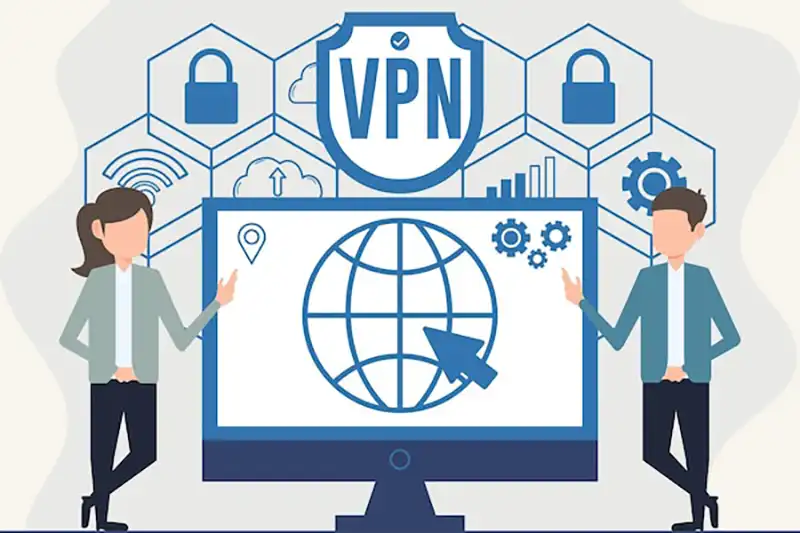A VPN server allows you to securely connect remote devices to your network, creating a private communication channel over the internet. How to set up a VPN server in MikroTik can be a game-changer for network administrators, providing secure access for employees or clients. But how to set up a VPN server in MikroTik? In this guide, we’ll walk you through the process step by step.
Understanding VPN and Its Importance in MikroTik
Before diving into the steps, it’s important to understand the concept of a VPN (Virtual Private Network). A VPN allows devices to securely connect to a network over the internet by encrypting the data transmitted between the device and the server. How to set up a VPN server in MikroTik provides network administrators with the ability to protect sensitive data, ensure secure remote access, and establish safe communication channels. In MikroTik, you can configure several types of VPNs, including PPTP, L2TP, and SSTP, each suited for different security needs and network environments.
Preparing Your MikroTik Router for VPN Setup
Before you start setting up the VPN server in MikroTik, ensure that your MikroTik router is properly configured. Make sure you have:
- A working MikroTik RouterOS device with the latest updates installed.
- A static IP address assigned to the MikroTik router (or a dynamic DNS service if you’re using a dynamic IP).
- Admin access to the MikroTik router via Winbox or WebFig.
Once these prerequisites are in place, you’re ready to begin the setup. How to set up a VPN server in MikroTik? It’s all about following a few configuration steps carefully.
Configuring the VPN Server in MikroTik
To begin setting up the VPN server in MikroTik, follow these steps:
Step 1: Enable VPN Services
Start by enabling the VPN services in MikroTik. Depending on the type of VPN you want to set up, go to the respective section:
- For PPTP VPN: Navigate to PPP > Interface > PPTP Server and enable the PPTP server.
- For L2TP VPN: Go to PPP > Interface > L2TP Server and enable it.
- For SSTP VPN: Under PPP > Interface > SSTP Server, enable it.
Step 2: Configure IP Pool for VPN Users
You’ll need to create an IP pool for your VPN clients to connect. Navigate to IP > Pool, and create a new pool with an appropriate range of IP addresses that your clients will use when connecting to the VPN.
Step 3: Create VPN Profiles
After enabling the VPN server, go to PPP > Profiles and create a new profile. Assign the previously created IP pool to this profile and set other parameters like DNS and routing options.
Step 4: Create VPN User Accounts
You need to create user accounts for clients who will access the VPN. Go to PPP > Secrets, then add a new user. Enter the username, password, and select the profile you created earlier.
Step 5: Configure Firewall and NAT Rules
To ensure secure communication between the VPN client and the server, configure your firewall and NAT rules. You’ll need to allow the VPN ports (e.g., 1723 for PPTP, 1701 for L2TP) in the firewall settings.
Once these steps are done, how to set up a VPN server in MikroTik should be a breeze, and your VPN server will be ready to use.
Testing the VPN Connection
After configuring the VPN server, it’s crucial to test the connection to ensure everything is working as expected. Try connecting from a remote device using the same VPN protocol (PPTP, L2TP, or SSTP). If the connection is successful, you should be able to access the network securely.
If there are issues, check the following:
- Verify that the VPN profile and user credentials are correct.
- Make sure that firewall and NAT rules are properly configured to allow VPN traffic.
- Ensure the router’s IP address or dynamic DNS configuration is set correctly.
Troubleshooting and Common Issues
Even though MikroTik offers a flexible and feature-rich environment for setting up VPN servers, occasional issues can arise. Common issues include:
- Incorrect Routing: Ensure that routes are configured properly in your MikroTik router to allow traffic from the VPN clients to your internal network.
- Firewall Blocking VPN Traffic: Double-check the firewall rules to make sure that the required VPN ports are open.
- DNS Resolution Issues: If users can connect but cannot resolve domain names, ensure DNS settings are correctly configured on both the MikroTik router and the clients.
By following these steps and troubleshooting tips, you’ll be able to ensure smooth VPN functionality in MikroTik and successfully manage how to set up a VPN server in MikroTik.

FAQ Section
Q1: How do I know which type of VPN is right for my network?
The type of VPN you choose depends on your security requirements. PPTP is fast but less secure, L2TP offers better security but may require more configuration, and SSTP provides high security and is ideal for environments with strict firewall restrictions.
Q2: Can I set up multiple VPN users on MikroTik?
Yes, MikroTik allows you to set up multiple VPN users by simply creating multiple user accounts under PPP > Secrets. You can assign different profiles to each user depending on their access needs.
Q3: What do I do if my VPN connection is slow?
Slow VPN connections can be due to many factors, including inadequate bandwidth, improper configuration, or inefficient routing. Make sure your router’s settings are optimized, and check your network’s bandwidth capabilities.
Q4: How can I secure my MikroTik VPN server?
To increase security, always use strong passwords for user accounts, and enable encryption (such as IPsec) for L2TP or SSTP connections. Also, consider using firewall rules to limit VPN access to specific IP addresses or networks.
Q5: Can I access my MikroTik VPN server remotely from anywhere?
Yes, you can access your VPN server from anywhere as long as your router’s IP address is reachable. If you’re using a dynamic IP address, consider using a dynamic DNS service.
In conclusion, how to set up a VPN server in MikroTik is a straightforward process if you follow the correct steps and ensure proper configuration of profiles, IP pools, and firewall rules. MikroTik’s flexibility and extensive features make it a powerful tool for securing remote access to your network. For more detailed guides and assistance, visit Wizland.



